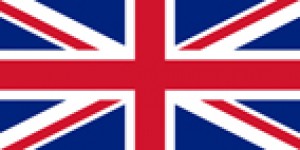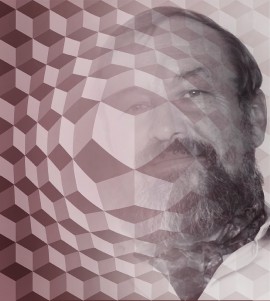
Zahájení výstavy 4. října 2004, Galerie Rubikon v Olomouci

Text from a catologue dedicated to exhibition in Rubikon Gallery, Olomouc 2004
It has not been long that I saw first digital graphics of Oldřich Schnabl. I rank among people that very respect competence of a “first impression” and I can tell with the benefit of hindsight that I was surprised at that time by an unambiguous maturity, interesting artistic effectiveness and a stylish form of the author who presented his work reluctantly. I have immediately realized, to express it diplomatically, that author in his ripe age reached something that other artists long for and they achieve such results after long years of effort. Already at the moment, I knew that such pieces of art deserve to be presented publically.
Author extends in his digital graphics the work of today classic Op Art which maybe unconsciously his ideal and theoretical background. Victor Vasarely and other advocates of geometric abstraction fully consciously rejected temptation of painting substance. They create according to strict geometric schemes. They work with space, templets and lines and they form seeming illusion of a volume of geometric shapes. Most of the Op Art artists claim, that the piece of art gains a new value when it is expanded. The original idea – we call it an image – which is often created by using templets (stencils), applying colour by a paint roller or by spraying, is only a model. This is how Op Art offers possibility of copying of an art piece and it is useless to speak about painting because by these technics they neglect the traditional concept of art. These are only basic characteristics of an artistic process of Op Art in fifties and sixties. I remind myself of a short metric film in which Victor Vaserely with his assistants, students, created a vast artistic surface by aid of carved templets, applied and moved in a certain rhythm or by gluing colorful geometric figures to formerly prepared outlined raster. The results were remarkable, but time consumed, effort, dexterous and labouriness of the whole team was great. With a great amazement after years, we admire that working by a help of computer where all this long process is excluded make the author create his artistic imagination faster and more effectively.
Some works of Oldřich Schnabl surprisingly recall chromatic spaces of Gregory Vardenag, an Italian artist who creates new virtual conception of space and his dominant figure presents transparency which in sence is found in the art of Oldřich Schnabl. Though he does not use expensive and light effects which were part of the Vardaneg’s installation of moving objects. Other Schnabl’s prints may evoke an imagination of stopped kinetic objects as a lasting static record. So also in this sense he outlines the work of fruitful Op Art movement. And his added value is that digital graphics created by this author bring the observer a certain feeling of calm.
Let cease other theoretical contemplation and assess the author’s work ourselves. Let us all wish to Oldřich Schnabl that his happy moment when he decided to realise his artistic imagination may have further continuation and that his work may bring satisfaction not only to the author himself but to his spectators as well.
Lubomír Schneider

Der Künstler knüpft in seinen Arbeiten an heute bereits klassische Op-Art-Werke und - vielleicht auch unbewusst - an deren geistiges und theoretisches Umfeld. Victor Vasarely und andere Vertreter der geometrischen Abstraktion lehnten ganz bewusst die Verführung der Malsubstanz ab. Sie arbeiten nach strengen geometrischen Regeln, arbeiten mit Flächen, Schnittmustern und Linien, sie entwickeln scheinbare Volumenillusionen der geometrischen Formen. Die meisten Op-Art-Vertreter sind der Meinung, dass ihr Werk erst dann eine neue Wertigkeit gewinnt, wenn es kopiert wurde. Die ursprüngliche Vorstellung - oft nennen wir sie ein Bild - ist nur eine Art Modell. So bietet Op-Art Möglichkeiten zur Vervielfachung des Kunstwerkes, und es ist unnötig, in diesem Zusammenhang von Malerei zu sprechen, denn durch diese Techniken wird der klassische Begriff eines Kunstwerkes aufgehoben. Dies sind nur einige Gedanken und Techniken des Op-Art der 50er und 60er Jahre. Ich erinnere mich an einen Kurzfilm, in dem Victor Vasarely zusammen mit seinen Studenten verschiedene große Flächen bildete: mit Hilfe von Schablonen, die in bestimmten Abständen gelegt und bewegt werden, durch Kleben von geometrischen Bildern in vorher umrissene Formen/Raster. Die Ergebnisse waren bemerkenswert, aber die Zeit, der Aufwand, die Fertigkeit und der Fleiß des ganzen Teams waren gewaltig.
Mit Staunen stellen wir viele Jahre später fest, dass die Computerarbeit alle diese langwierigen und mühsamen Schritte überflüssig macht und dass der Künstler seine Idee viel schneller und manchmal sogar wirkungsvoller realisieren kann.
Aber nun genug von theoretischen Überlegungen, machen wir uns selbst ein Bild von seinen Werken. Wünschen wir ihm, dass der glückliche Moment seiner Entscheidung, seine graphischen Ideen zu realisieren, noch viele erfolgreiche Werke hervorbringt und dass seine Arbeiten Zufriedenheit und Erfüllung sowohl ihm als auch uns Zuschauern bringen mögen.
